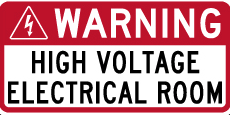Hazard Communication

Today, our society is acutely aware of its environment, especially its working environment, and is reacting as a whole to regulate hazardous substances therein. This social reaction has resulted in the federal government mandating the Occupational Safety & Health Administration (OSHA) to write a uniform hazard communication standard stating that employers have to tell workers about workplace hazards. By knowing and understanding workplace hazards, workers can assure that employers communicate all hazards associated with the job, provide appropriate protection and controls, and give training so that employees can work with the smallest possibility of injury or illness.
Apart from just chemical substance hazards, there are also many types of other workplace hazards. Biological hazards include HIV-AIDS, Hepatitis A, B and C, and rabies. These can be present in fellow employees or in animals, birds, and insects both in a laboratory setting or the surrounding environment. Safety hazards are present in work with machines and equipment, like chainsaws, forklift trucks, ladders and wood working machines. Physical hazards include cold, heat, noise, high voltage and vibration that can cause injury and harm to employees. All hazards, whether they be hazardous substances, safety, biological or physical hazards are to be communicated to the employee by their employer prior to work.
Drexel University’s Hazard Communication Program ensures compliance with all directives pertinent to the Occupational Safety and Health Administration (OSHA) 29 CFR 1910.1200. This program discusses potential chemical-type hazards present in the workplace as well as other hazards such as safety, physical, and biological as they pertain to the Facilities Staff. It is the desire and the intention of Drexel University to provide a safe and healthful working environment. All reasonable efforts will be made to make every hazardous chemical operation as safe as possible, and to inform employees in accordance to the Hazard Communication Standard and Right to Know Act.
EH&S utilizes pictograms and/or symbols to communicate these hazards to university personnel. These pictograms and/or symbols are placed on laboratory doors, hazardous material storage areas, hazardous materials, and equipment. The National Fire Protection Association (NFPA) 704 label is used to communicate multiple hazards. The label uses a color and number code to communicate the degree of the hazards.
Personnel can request a copy of the university's Hazard Communication Plan by contacting EH&S.